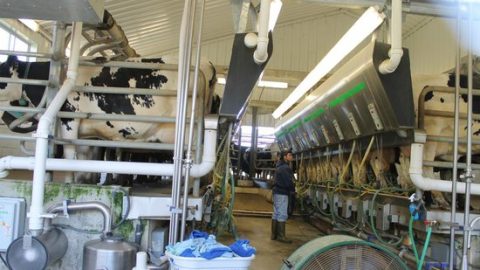
Milk supply area at Wright farm
The Wright Dairy Farm is a long-standing dairy producer in North Smithfield, Rhode Island, USA. Although only a family-size facility, the Wright family has always taken full advantage of solutions to improve productivity, which is also the reason they turn to Lean.
Nathan Bonds, a consultant who worked with Wright took the time to understand their manufacturing processes. Bonds has found that changes are less labor-intensive than you think, but they require effort from the collective rather than the individual.
The Wright Farm began retailing its bakery products made from milk in 1970. With the availability of raw materials, the farm’s bread output is always sufficient to meet the needs of the people in the region. As more and more people became aware of Wright’s products, it was time that his family decided to improve the process to expand production.
After a period of deliberation, Wright turned to a lean expert for advice and guidance. His goal is to increase the production of milk cakes to 93 pieces a day to meet the needs of the holidays. According to Bonds, the first thing Wright did was analyze each stage of the process to find the eight fundamental wastes. The results showed that Wright was suffering from 4 of 8 wastes directly affecting the performance of the whole process.
After identifying the waste, the improvement team began to apply solutions to overcome this situation. First, the team designed some leather pouches to store cookware and placed them next to each chef. As a result, chefs save a great deal of time and space moving when they need to take tools. Next, the bakery ingredients are continuously monitored and added to the container before it runs out. This eliminates the fact that the chefs have nothing to do while waiting for supplies. On the other hand, the improvement team also proposed some modifications in the process to limit the waste of materials and manpower.
As a result, after only 2 weeks from the beginning of the Lean application, the Wright bakery has increased its production to 75 cakes per day, quickly approaching the target of 93 cakes per day as expected.
(To be continued)
Productivity and Quality Office